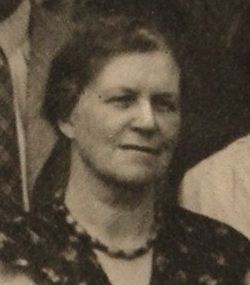Ida Maclean facts for kids
Quick facts for kids
Ida Smedley Maclean
|
|
|---|---|

Ida Maclean-Smedley (1933)
|
|
| Born |
Ida Smedley
14 June 1877 Birmingham, England
|
| Died | 2 March 1944 (aged 66) London, England
|
| Nationality | English |
| Known for | First woman admitted to the London Chemical Society |
| Scientific career | |
| Fields | Biochemistry |
Ida Maclean, born Ida Smedley (June 14, 1877 – March 2, 1944), was an amazing English biochemist. She made history as the very first woman to join the London Chemical Society.
Contents
Early Life and Education
Ida Smedley was born in Birmingham, England. Her father, William Smedley, was a businessman. Her mother was Annie Elizabeth Duckworth. Ida was taught at home by her mother until she was nine years old. She grew up in a home that valued learning and new ideas.
She went to King Edward VI High School for Girls, Birmingham. This was from 1886 to 1896. After high school, she won a scholarship. This allowed her to study at Newnham College, Cambridge.
At Cambridge, Ida studied chemistry and physiology. She did very well in her Natural Sciences Tripos exams. She earned top marks in the first part. She also got excellent results in the second part.
After a short break, Ida continued her studies. In 1901, she started postgraduate research. She worked at the Central Technical College in London. Later, she moved to the Royal Institution's Davy-Faraday Research Laboratory. The University of London gave her a D.Sc. degree in 1905. This is a very high science degree.
Academic Career and Discoveries
In 1906, Ida Maclean became a lecturer. She taught in the chemistry department at Manchester University. She was the first woman to be on the staff there. She taught until 1910. She also helped students in the women's laboratories. Her research focused on how organic compounds interact with light.
In 1910, Ida received a special scholarship. It was one of the first Beit fellowships. This allowed her to start working in biochemistry. She joined the Lister Institute of Preventive Medicine. Her research there earned her the Ellen Richards prize. This award came from the American Association of University Women.
Ida married Hugh Maclean on March 28, 1913. He was also a scientist at the Lister Institute. They had a son and a daughter together. During World War I, she helped the Admiralty. She worked on important projects. These included gas warfare and making large amounts of acetone. Acetone was produced using a special fermentation process.
Between 1920 and 1941, Ida published many papers. About thirty of her research papers appeared in the Biochemical Journal. Many of these were written with other scientists. She was very interested in fatty acids. She studied their role in animals. She also researched how fats are made from carbohydrates.
By 1927, she co-wrote a book with her husband, Hugh. It was called The Lipins. Ida became a top expert in biochemistry. In 1943, she wrote her own book. It was titled The Metabolism of Fat. This book was the first in a new series by Methuen.
Championing Women's Rights
Ida Maclean worked hard to improve things for women. She wanted women to have more opportunities in universities. In 1907, she helped start the British Federation of University Women. This group supported women in higher education.
In 1918, she became a fellow of the Royal Institute of Chemistry. Then, in 1920, she made history again. She was the first woman officially allowed to join the London Chemical Society. This was a huge step forward for women in science.
Ida served on the council of the London Chemical Society. This was from 1931 to 1934. She also led the British Federation of University Women. She was their president from 1929 to 1935. Later, this group created a research fellowship for women. They named it after her to honor her work. From 1941 to 1944, she helped the University of Cambridge. She was on their women's appointments board.
Later Life and Legacy
Ida Maclean passed away on March 2, 1944. She died at University College Hospital in London. Her body was cremated. Her work opened doors for many women in science.
See also

